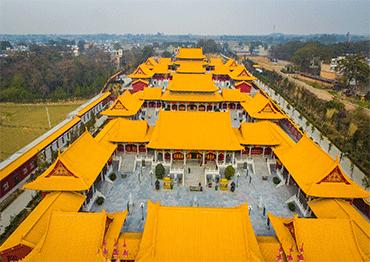Experts are increasingly concerned that village debts will endanger rural development in the coming years.
Huang said local debts are mostly caused by white elephant projects. He described one village in Hubei Province with a population of 1,476. In 2019, the village’s GDP ranked second-last in the region, but its debt was 2.7 million yuan (US$370,000), mostly caused by construction of the village’s administrative building and its surroundings.
“The project has been made flam-boyant enough to impress the higher authorities,” he said.
“All the stakeholders benefit from these ‘face-lift’ projects. Higher officials get more credit to put toward promotions, local collectives win a good reputation and village officials profit from the construction,” Huang said.
In particular, debts were driven up by the “Beautiful Countryside” campaign, an initiative started in 2013 to improve the living conditions and environment in villages, as well as new constructions intended to attract tourists and infrastructure renovation.
“All the villages burdened by huge debts in my research had done face-lift projects,” Lü said.
Zhou argued that not all projects in villages are for prestige. Some, like irrigation and paving roads, are improving the lives of local residents.
Nevertheless, many experts believe that even if the infrastructure is necessary, the debts it creates have severe consequences.
“The debts can ruin the villages’ future by paralyzing development,” Lü said.
Over the past few years, some contractors who bid for village projects have resorted to suing local officials to get paid. From 2016 to 2018, the number of lawsuits rose from one to 114 in Gaoping, Shanxi Province, with the village governments losing them all. Most officials cannot pay, even after a court verdict, leading to individual punishment for collective failure to pay.
In 2019, a representative from a village committee in Henan Province was detained after he refused a court order to pay for a project. Other village officials are blacklisted by the national social credit system, and are deprived of the right to use public facilities like trains and airplanes.
According to Ma, in order to reduce the impact of being blacklisted, some villages change their officials.
“But if the debts remain, the new leaders will probably be blacklisted again in a new round of lawsuits,” she said.

 Old Version
Old Version

